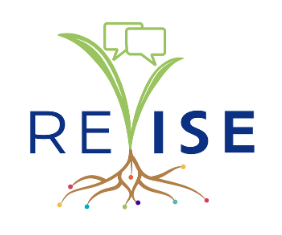October 1st, 2019 - September 30th, 2020 | PROJECT
STEAM, the use of art as a context and tool for science education, is currently a hot topic in the science education field. In almost all instances of study and practice, it involves the use of science-themed or science-informed art in science education. As such, it does not take advantage of the majority of artistic output that does not have an obvious connection to science. The National Academies of Sciences, Engineering and Medicine recently called for more research to expand the "limited but promising" evidence that integrating arts and humanities with science education leads to better learning. The goal of this 2.5-day conference is to bring together representatives of both art and science groups to have a shared discussion around how non-scientific art can influence science education in theory, and how we can apply empirical results to the theory. For purposes of this conference, "non-science art" is defined as art that was not inspired by science. Conference attendees will include researchers (art and science education researchers) and practitioners (artists, art museum interpreters, and science educators). The conference will take place during the 2020 Black Creativity exhibition at the Museum of Science and Industry, Chicago. It is anticipated that by holding the conference at that time the audience for the conference and its impact will be informed by more diverse attendance.
The conference will be implemented starting with a pre-conference reading. Attendees will be sent a copy of the white paper from the Art as a Way of Knowing report for background reading and also asked to contribute to a Google Document that describes their various contexts. Each day of the conference will focus on a theme -- state of the field and possibilities and research -- and be comprised of large and small group interactions. Attendees will be invited from the ranks of practitioners, researchers and educators in the art and science education fields; several slots will be available for open (non-invited) participants. Key outcomes include: (a) a summary of all the research that has been conducted on using non-science art in science education, (b) starting points for building a theory on why non-science art can be used in science education; and (c) a list of specific research topics that would help inform, advance, and test the theory. In addition to assessing satisfaction with the conference, evaluation will also include a one-year post conference survey to investigate impact of participation in the conference.
This conference will generate products that will give guidance to both researchers and practitioners who want to use art in science education. These products include a white paper synthesizing the discussion and appendices that include raw transcripts and a bibliography of resources. Another product is a roadmap to create interventions that can be studied, which should lead to a stronger, more rigorous theory of practice about how art can be integrated into science education.
This project is funded by the National Science Foundation's (NSF's) Advancing Informal STEM Learning (AISL) program, which supports innovative research, approaches, and resources for use in a variety of learning settings.
Project Website(s)
(no project website provided)
Project Products
One but Not the Same: Non-Science Art in Science Education
Team Members
Aaron Price, Principal Investigator, Museum of Science and IndustryJana Greenslit, Co-Principal Investigator
Manuel Juarez, Co-Principal Investigator
Funders
Funding Source: NSF
Funding Program: AISL
Award Number: 1939342
Funding Amount: $70,365
Tags
Audience: Educators | Teachers | Learning Researchers | Museum | ISE Professionals
Discipline: Art | music | theater | Education and learning science | General STEM
Resource Type: Project Descriptions | Projects
Environment Type: Conferences | Professional Development | Conferences | Networks
